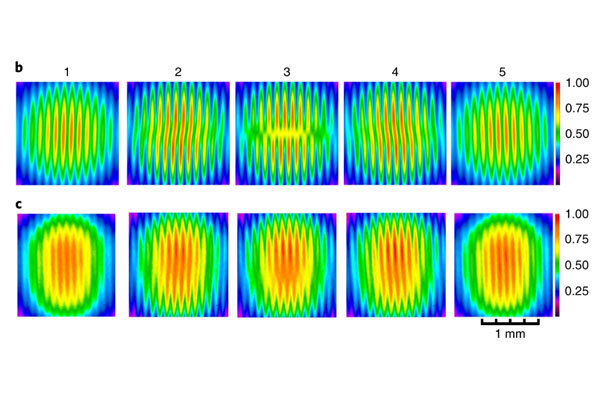
Image Credit: University of Dayton
A new "state of light” has been created by scientists at the University of Dayton that may open up a variety of groundbreaking new applications, such as those of quantum communication protocols. First, researchers need to further develop their understanding of this new state of light and its behaviors and potential applications.
Exploring The Possibilities Of Light In The Transverse Axis
Physicists have long understood that light has a linear momentum that follows along the propagation direction. In addition, scientists have also conducted studies that have led to the discovery of the angular momentum possessed by light, as well as a spin angular momentum (SAM) that is related to circular polarization, and finally, an orbital angular momentum (OAM) which is reliant on the azimuthally dependent phase.
These angular momenta are generally longitudinal, however, SAM momenta traverse to the propagation direction which has made a number of new applications possible. On the other hand, OAM momenta have been less studied due to its rarity and complex nature. Recently, two US scientists were able to create a new light state that allows this rare movement of light.
For the past two decades, scientists have explored how light behaves and rotates around the longitudinal axis that sits parallel to the direction of traveling light. Andy Chong and Qiwen Zhan at the University of Dayton, Ohio decided to explore the possibilities of light in the transverse axis, and subsequently became the first researchers to successfully create a new "state of light” that demonstrates how light can rotate around a transverse axis that lies perpendicular to the direction of light travels, moving like a cyclone.
The duo’s work, published this month in the journal Nature Photonics, which focusses on communicating the latest advances in research into light generation, manipulation, and detection, describes how Zhan and Chong made this important discovery.
Using their time on sabbatical the two scientists fully put their efforts into exploring the possibilities of light in the transverse axis, going into their research without preconceived notions of hypothesis about what they were looking to find.
As a result, they were able to demonstrate a spatiotemporal optical vortex that is a three-dimensional wave packet with a controllable purely transverse OAM. The magnitude of this newly discovered transverse OAM carried by the spatiotemporal optical vortex is adjustable and scalable to a larger value in comparison to the traverse SAM. Because of the controllability of the OAM in this transverse dimension, a number of potential novel applications may be made possible in the future.
Future Developments
The scheme developed by Zhan and Chong is able to be adapted by different wavefields and other spectral regimes. This means that the study of spatiotemporal optical vortices is possible in a variety of fields, opening up opportunities to develop a range of new applications.
Zhan and Chong admit that their work was spurred by curiously, and since making their groundbreaking discovery they are now questioning what will come next. The pair intend to continue their exploration, however, the priority right now is to examine how the research findings are relevant to applications. Currently, it is considered that applications in data transmission and security may emerge as those that are first to be developed. However, this may be a long way off, as a great deal more research must be conducted first.
In general, there needs to be a better understanding of how light interacts with substances in space and time before its full potential and use can be achieved. The work achieved here represents a significant step in this direction.
Disclaimer: The views expressed here are those of the author expressed in their private capacity and do not necessarily represent the views of AZoM.com Limited T/A AZoNetwork the owner and operator of this website. This disclaimer forms part of the Terms and conditions of use of this website.